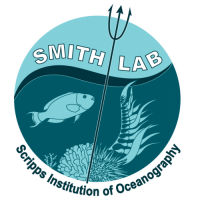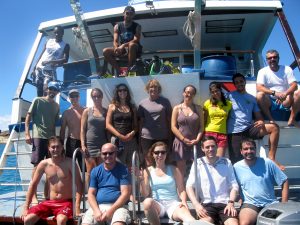This blog is from our PhD student Jill Harris regarding her current expedition to Brazil.
___________________________________________________________________
One of the most things I learned early in my PhD at Scripps is how important it is to be flexible. So at the end of July, when Jen asked, “Do you want to go to Brazil? I need to know by 4 pm today” I didn’t hesitate. I got a friend to cover my TA responsibilities (thanks, Lauren!), dusted off my dive gear, and worked closely with Clint, Rachel, and Tali (students in Stuart Sandin’s lab) to arrange the necessary research permits, travel logistics, and science gear. And here I am, just a few weeks later: sitting on the deck of a dive boat anchored at tiny Santa Barbara island in the Abrolhos archipelago, 40 km from the mainland of the state of Bahia in Brazil.
For me, this was an exploratory mini-research expedition. Brazilian scientists have worked in this system for decades, but it is entirely new to our lab. My goal was to jump in the water, collect some samples of coral and algae, and talk to the experts. Hopefully, I (and the rest of the Smith lab) will be back there soon with full-fledged experiments.
Our group had 8 people from American universities and 7 from Brazilian universities, but really, we come from the US, Brazil, Australia, the UK, Germany, and Colombia. We have our own little international science community on this dive boat, and similar to our last expedition to the Northern Line Islands, we have scientists studying the corals, the algae, the fish, and the microbes in this ecosystem.
The Abrolhos islands are unlike most other coral reefs that I have studied. In other places where our lab works, like Hawaii, Palmyra, and the Caribbean, the seafloor is literally built of coral reef: thousands of years of coral skeleton have built up a solid bottom on top of which living coral grows. In contrast, the Abrolhos ecosystem is not a true coral reef. It is a shallow, tropical marine environment that was formed when rising sea levels submerged a stretch of land. The Abrolhos islands look like rocky sea floors with coral (and algae) growing on them.
Well, like rocky sea floors with big fat tropical fish swimming around – but more on that later.





